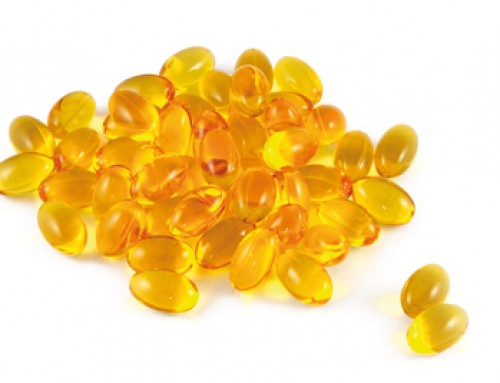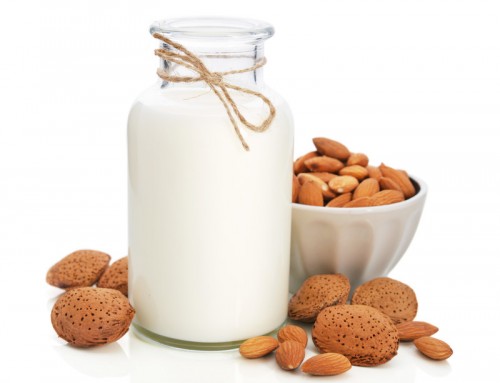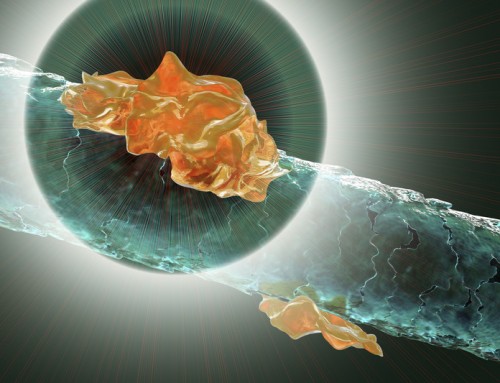AROMATHERAPY, ESSENTIAL OILS AND USAGE
Essential oils are very popular due to their wide range of usage. Many oils are known to have a beneficial effect on a person’s physical and psychological well-being. Some oils also have proven healing effects and are widely used by cosmetics, medicine, aromatherapy, etc.
WHAT ARE ESSENTIAL OILS
Essential oils are highly concentrated volatile substances (extracts) with a distinct odour, obtained by distillation from various parts of aromatic plants. In folk culture, it is often said that they represent the essence and soul of the plants. The oils are collected in very small amounts in special glands located in the fibers of the aromatic plants. Common features of all essential oils are that they are: volatile, have a strong characteristic odour, lipophilicity -solubility in fat and alcohol, high refractive index and optical activity Essential oils are obtained from various plant parts such as flowers, fruits, leaves, branches, resins, fruit peels, roots, seeds, etc The most well-known extraction techniques are steam distillation, extraction (enfloration) or physical compression. Steam distillation is basically a very old method since distillation vessels were already used by the peoples of Mesopotamia 5000 years ago. The process is carried out by heating the plants in a large container with steam, and then the volatile components which are released from the plant are collected (condensed) in another container. Essential oils begin to appear on the surface of the water as oil droplets. The quality of the essential oils may vary in chemical composition and odour due to the soil, climate and the method of plants growing.
This is the reason we know more plant chemotypes. Some plant chemotypes differ greatly in composition, despite belonging basically to the same plant family and having the same appearance. For example, the chemical composition of lavender will not be the same if it grows in Dalmatia on the island of Hvar or in the mountains of French Provence. Thus, oils from certain countries have gained a reputation for higher quality oils, such as Bulgarian rose, Ceylon cinnamon, and Turkish pelargonium. Essential oils are lighter than water and insoluble in water – so they float on the surface of the water. They are soluble in alcohol, ether and vegetable oils (fats). All essential oil must thus be packed in dark (brown) bottles, protected from UV light.
Hydrolates or floral waters are also a product of the distillation of plants besides essential oils. Hydrolates are water-soluble constituents of essential oil. Aromatic substances in plants contain a water-soluble and water-insoluble part. The classic essential oils as we know are a water-insoluble portion of distillation and thus floating on water. In order to take advantage of all the positive and beneficial effects of essential oils, caution is needed. It is important to make sure the oils are100% natural and not artificial constructs or synthetic ones. Artificial oils have no healing effects and are only suitable for room scents or other non-aromatherapeutic applications.
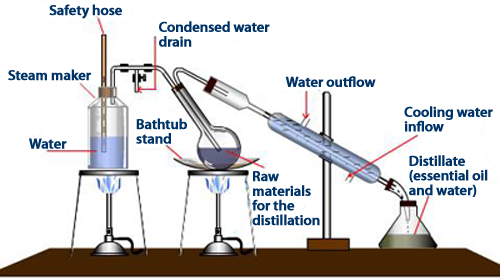
SHORT HISTORY OF AROMATHERAPY
Aromatherapy is one form of medicine where the aromatic components of plants, especially essential oils, are used as aids. It officially falls under pseudoscience and is recognized in many countries around the world as complementary therapy and a form of alternative medicine. The components of the essential oils, have a direct effect on the subconscious through the limbic system, and thus have a beneficial effect on humans. It is also important to emphasize that aromatherapy also poses a certain risk as, for example, essential oils may have side effects. Many essential oil components are skin irritants or phototoxic. Consumption of essential oils is not recommended, except under the supervision of a physician or a certified aromatherapist. Aromatic plant parts and essential oils have been used in ancient civilizations for therapeutic, spiritual and hygienic purposes. It has also been known to be used in perfumes, mainly in China, India, Egypt, Greece and Rome. Distilled essential oils have become more widespread and used as medicinal preparations since the 11th century, when the Persian scholar Avicenna, also known as Ibn Sīnā (980-1037), isolated essential oils by steam distillation. The influence of essential oils on the physical and mental well-being of people has been extensively researched in recent history by the French chemist Rene-Maurice Gateffosse (1881-1950), who also introduced the term aromatherapy.
USE OF ESSENTIAL OILS WITH GUIDES
Due to its wide range of activities, essential oils are used in many fields. They are most commonly found in cosmetics, aromatherapy, perfumery, medicine, and nutrition. We can also find them in the diet as natural spices or flavours in drinks, jams, etc. In perfumery, they are the basis for aromas. In medicine for various antiseptic creams, ointments for skin diseases, hair tonics, anti-rheumatic ointments, baths, etc. Of course, they are most commonly used in aromatherapy and as a supplement in cosmetic skincare preparations. Cosmetics use essential oils for a wide variety of preparations but are always mixed with some basic vegetable oil. Cold-pressed or refined oils such as sunflower, almond, jojoba, avocado or other suitable oil are used for this purpose.
You can also use any cream, ointment or lotion that does not already contain essential oils as a base for the addition of essential oils by simply mixing them into it. It is most advisable to use preparations containing as few additives as possible. Mixtures typically contain from 1% to 3% of essential oil, with rare exceptions up to 10%. So, it is very important that you do not apply essential oils to the skin without first diluting them with basic carrier oils or other suitable base. Undiluted essential oils can be harmful to the skin as they irritate the epidermis and can trigger various allergies. Essential oils can be combined with each other, but it is still good to know the effects of an individual oil that has specific effects on your body. Oil mixtures should be stored in a dark and cool place, but it is also important that the bottle in which the oil is stored is well closed.
INHALATIONS
Some essential oils are very suitable for inhalation, especially peppermint oil containing menthol. Inhalation is known to have a beneficial effect on colds and sinusitis. The use is very simple. If you have a evaporator, just add few drops it. If you do not have the evaporator, make your own home made steam inhaler. Pour boiling water into a larger container and drop a few drops of desired essential oil into it. Place your head over the pan and cover with a towel and start inhaling. Very soon you will notice that hot water in combination with essential oil has a very beneficial effect on your respiratory system.
Sometimes it can help if you can breathe the essential oil straight from the bottle but it is definitely a much more effective inhalation procedure described above. Be careful not to overdo the essential oil as it can irritate the eyes in too much concentration. It is important to remember that it works at low concentrations.
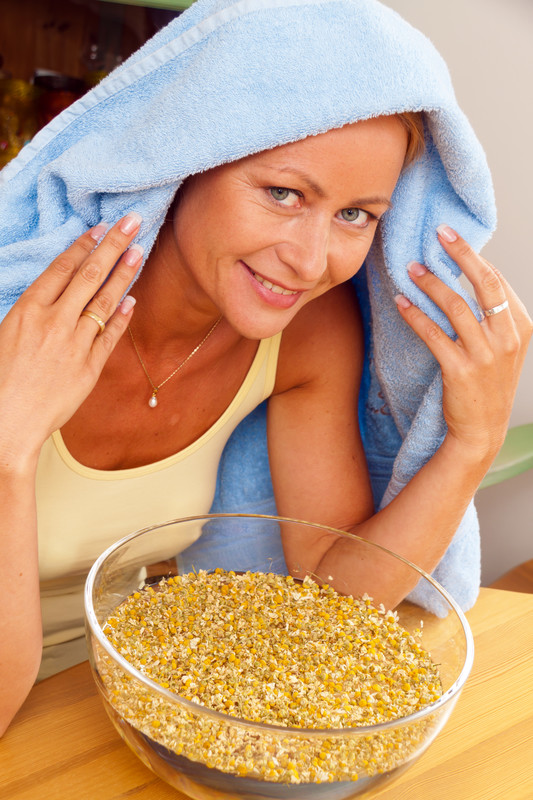
AROMATIC BATHS
Aromatic baths can be a real dream and relaxing experience. It is advisable to drip about 10 drops of essential oil into one tablespoon and pour it into warm water before taking a bath. If necessary, you can also add a drop more or less, but do not overdo it with essential oils, as it works in very small doses. Too much essential oil can cause itching and redness.
For an even fuller experience, you can add some mineral bath salt in addition to essential oil. Salt has been used for baths in antiquity since it has discovered soothing and healing properties. For very dry or oily skin, the combination of salt in the water helps to restore the skin’s functions and puts it into a balance. Salt baths work to eliminate harmful toxins and absorb beneficial minerals, but beware, this process is very exhausting for the body, so don’t take more than two baths a week.
MASSAGE OILS
The massage oil is prepared by taking some basic natural oil (or a mixture of these) and mixing from 1% to 3% of one or more essential oils. It is important that essential oils are never applied directly to the skin as they are too concentrated.
Example of preparing a body massage oil: Put 3 to 6 drops of essential oils (as needed) in 10 mL (2 teaspoons) of base massage oil. A full body massage requires 15 to 30 mL (3-5 teaspoons) of the mixture, depending on the size of the person and the dryness of the skin. For example, you can put about half to one teaspoon of essential oils in one 200 mL of base oil.
COSMETIC PRODUCTS
Body Care: Make preparations such as creams, ointments, lotions similar or massage oils. If you have a base that does not already contain essential oils, you can add from 0,5 % to 2% of essential oils to it. Usually a mixture of 1% is sufficient, but be careful not to add too much as it may cause skin irritation. This means, for example, that you have to mix 5 to 20 drops of essential oil in 50 mL of cream.
Facial preparations: Prepare only 0.2% to 1% essential oil blend in basic vegetable oil or other suitable base for the face (e.g. cream). This means, for example, that you only need to dilute 1 to 3 drops of essential oil in 15 mL (3 teaspoons) of base massage oil, tonic or cream.
AMBIENT SCENTS AND REFRESHING OF ROOMS
A pleasantly scented space has proven to have a positive and beneficial effect on the body and mood. With the scents of essential oils you can pamper yourself and create the atmosphere you want. The spaces are most often refreshed and scented with vaporizers, such as aromatherapy candles or burners, or as some people call them fragrant lights. They are available at any candle store or major shopping mall. It’s basically a burner, mostly ceramic, that has a water tank that you put a few drops of essential oil into. A small container for the candle placed under the water tank, which warms the water tank and accelerates the evaporation of the essential oil into the room. In addition, you can scent the room with other accessories such as a handheld sprayer or humidifier.
Candle evaporator: It is advisable to pour 8 to 10 drops of essential oils into the half-filled top tank with water.
Hand sprayer: In a spray bottle, prepare from 2% to 3% a mixture of one or more essential oils in water. For every 5 mL (1 teaspoon) of cold water, apply 3 drops of oil, about 60 drops per 1 dcl of water. Also add alcohol to the hand sprayer. Essential oils are well soluble in alcohol and a more homogeneous mixture with water can be prepared. Add 1 to 2 teaspoons of alcohol (ethanol) to a mixture of 1 dcl of water and essential oils. Shake the bottle well before spraying.
Air humidifier: Add any essential oil or oil mixture to the air humidifier. It is recommended that you put 10 to 15 drops of oil into the water, or even more or less if necessary, depending on how intense the smell you want. If you do not have a humidifier, make one yourself. Put a few drops of essential oil in a small container of water and place it on the radiator.
Perfumed pillow: If you have trouble sleeping, have two drops of essential oil with a calming effect on your pillow (e.g. lavender) and will help you to have a sweet dreams.
ESSENTIAL OILS USAGE WARNINGS
Essential oils are not recommended to be consumed (except when under the supervision of an aromatherapist), undiluted should not come in contact with delicate skin on the lips and in the area around the eyes. If a drop of oil accidentally comes into contact with your eyes, you should immediately rinse it with a small amount of base oil and then treat it with a soft cloth. Only then rinse the eye with water and seek medical advice if necessary. Caution is needed with use of essential oils as they are extremely concentrated and should not be overdosed. In addition, the use of certain essential oils can be problematic in certain cases; e.g. invigorating (up lifting) oils should not be used by people with high blood pressure, and restrictions also apply for pregnant women and children. Some essential oils are known to be phototoxic. Such oils increase the sensitivity of the skin to sunlight, so it is not advisable to apply them to the skin immediately before exposure to the sun (or solarium) as they can cause uneven and unesthetic pigmentation. Essential oils that can act phototoxically are all citrus fruits (especially bergamot), angelica, and ginger because of the way they are extracted (cold pressed).
Herbana company offers only the best quality essential oils and hydrosols with all required analysis, known origin, and certified by modern internationally recognized ECOGEA standard.


